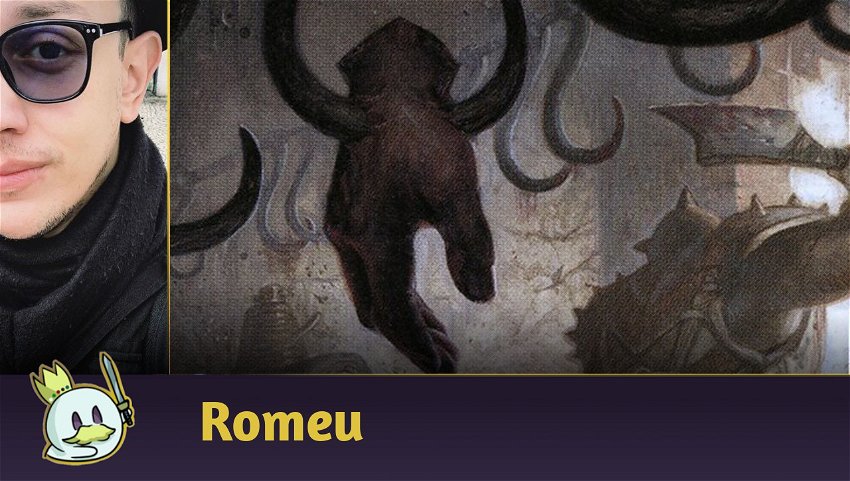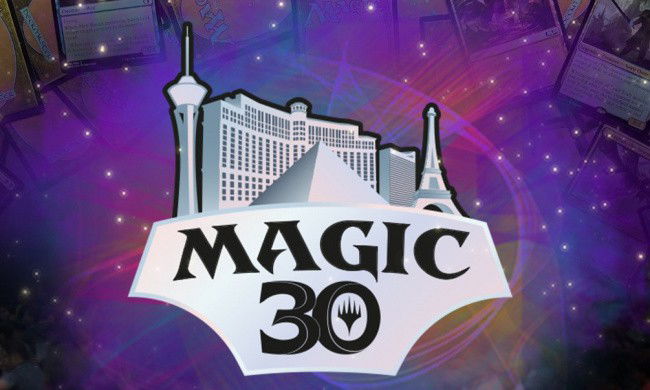The week got off to a busy start in the Magic universe with a new banned and restricted announcement for Standard and Modern. While the eternal format has lost yet another companion, Yorion, Sky Nomad, they addressed a prevailing problem in Standard — the predominance of Black-Based Midranges — by banning The Meathook Massacre to diversify the Metagame and make room for other colors and combinations to appear in competitive events.
In today's article, we're going to elaborate on just how accurate this ban was, and what we can expect from Standard in the weeks leading up to The Brothers' War's release.
Why was The Meathook Massacre banned?
Of course, Wizards of the Coast, through Ian Duke, published an article explaining the reasons that led them to ban The Meathook Massacre, in addition to addressing their view of other competitive formats, but context greatly matters: since the rotation, Standard has been dominated by Black-Based Midranges, whether monocolored, with splash, or multicolored.
If we look at the format's Metagame as it performed during the pre-ban weeks, of the ten most played decks in Standard, seven were into this category: Esper Midrange, Mono Black, Jund Windgrace, Rakdos Anvil, Rakdos Midrange, and Jund Midrange — together, they made up over 65% of viable archetypes in tournament play.
One of the key pieces of this predominance is reflected in how well they can respond efficiently to all situations while accumulating value with a specific engine: Fable of the Mirror-Breaker, Raffine, Scheming Seer, Soul of Windgrace, Invoke Despair and Reckoner Bankbuster are all widely played on their respective strategies, and unless Wizards wanted to make a sudden change in format by banning five or more cards at once, it would make no sense to deal with just one supposedly broken part and leave the others.

So, the focus turned to the other inherent characteristic of Black-Based dominance today: interaction.
One of the main reasons for the Midranges' success in competitive formats is the way they have a range of efficient responses that complement their card advantage engines, establishing a perfect mix between being proactive or reactive to dictate the pace of the matchup.
In this regard, Liliana of the Veil and The Meathook Massacre stand out because they offer something beyond dealing with the opponent's board, in addition to complementing each other and punishing distinct strategies together.

Liliana of the Veil was, for weeks, one of the most talked about and hated cards of this season, alongside Invoke Despair. Both have in common the fact that they work with resource asymmetry: either you are reducing the opponent's options, or you are accumulating yours. They punish "go big" strategies or archetypes that seek to cast one threat at a time and perform 1-for-1 trades, while they are punished by "go wide" archetypes, which plays multiple threats to the point of being irrelevant whether they lose a threat or another.

The Meathook Massacre goes in that vein — it not only punishes the "go wide" or archetypes that try to play around Liliana of the Veil by populating the board with small threats, it also helps its controller recover its breath and prevent a burn spell or two like Lightning Strike from ending the process.
That is, even before the ban, you had to pick your poison: try to win the race with multiple creatures in play and be punished with a flexible sweeper that only grows in efficiency with each turn, or attempt to play impactful threats, one at a time, and be punished for more efficient trades across the board with a Planeswalker.
Now, Wizards basically decided for players which poison needed to be removed, and with The Meathook Massacre being virtually ubiquitous across all archetypes, this ban helps to weaken Black Midranges and hopes to expand the format's diversity by strengthening Aggro strategies.
Was this ban the right decision?
There is no "right" or "wrong" choice regarding what to ban in Standard today. On social media, several people commented that "just" one sweeper won't be enough to end the Black Midranges' reign, and they are right: the card pool available for this strategy is very efficient, and banning too many pieces at once is a commercially bad decision that would cause even more backlash — Wizards has tried to intervene in what is actually present on most lists and surgically, the dominance itself will only be fixed by expanding viable strategies, including new pieces that will come out in the next releases.
In that sense, we cannot say whether The Meathook Massacre was a good option, but it certainly was the only option.
However, the predominance of a color, combination or archetype is a natural part of Standard given the lower availability of efficient answers for every threat that appears in each new set. A few years ago, UGx were rampant, at other times, Blue-Based were part of the main strategies, and we can't forget that year when Goblin Chainwhirler was so prevalent that the best decks were basically Mono Red with splashes.
That is, fixing Standard is not just about banning, but also about efficiently using new releases to broaden diversity. I doubt that R&D worked on The Brothers' War with the predominance of Midranges in mind, but if it brings other equally powerful options for the other colors, it already helps to bring balance and diversity to the format, and that's what we should bet currently.
Where does Standard go now?
Midranges will remain on top.
We've looked enough into the past, so let's consider what awaits us in the future. And the first point that should be clear is that these strategies haven't died and will probably remain as the format's main contenders.
Esper Midrange is the best deck in Standard today. It has the best threats, a stable manabase, forces 2-for-1 better than other strategies, and has a diverse array of options that allow it to have more aggressive variants with efficient two-drops, or broaden the attrition scope with more Planeswalkers.
Other strategies that won't disappear are Rakdos and/or Rakdos with splash lists. After all, not only do they still have the solid core provided by Bloodtithe Harvester, cheap removals and an engine or another for each version, they also have the best card in the format today: Fable of the Mirror-Breaker.

Many people speculated that Kamigawa: Neon Dynasty's saga would get banned in Standard and Pioneer for its power level. It didn't, and we can assume it won't anytime soon, given that the card wasn't even mentioned in Monday's announcement.
Aggro gains more space, but that's all.
To respond to the current decks, we will likely have an addition of go-wide strategies to capitalize on the 1-for-1 trades.
Gruul Aggro will probably be one of the most effective options in this regard, as it mixes well the need for a fast and impactful clock with resilient threats that punish the opponent for spending their removals at the wrong time.
Mono Red is also a viable strategy now that you don't have to worry about your progress being nullified with just one card, like The Meathook Massacre did with lifegain.
Even if your creatures die in the medium term, your burn spells and threats that force 2-for-1 like Bloodthirsty Adversary and Squee, Dubious Monarch can help keep pressure on the opponent later on.
For the same reason, Boros Aggro and Mono-White variants may appear more often now, but will need to re-adapt to punish opponent's 1-for-1 trades with means of interacting and/or delaying their plays.
Naya Humans is another archetype that looks promising with the new ban for the quality of its threats coupled with powerful value engines like Elspeth Resplendent.
What about Control?
With a possible rise of Aggro in the coming weeks, will Control decks have room to fight them, or will the Midranges adapt too quickly and leave no room for strategies like Azorius or Jeskai?
I assume this archetype will remain low for the next few weeks due to the lack of more comprehensive answers in Standard today. With the next sets, these decks will possibly have more space in the Metagame as more efficient cards are released.
Conclusion
That's all for today.
While the ban will impact many of the top archetypes today, the absence of The Meathook Massacre probably won't have enough impact to knock them off the top. But without the enchantment, more aggressive decks that bet on quantity over quality can try to succeed by playing "under" and/or forcing unfavorable trades without worrying that all their progress will be nullified by a sweeper coupled with lifegain.
Standard will likely only change as The Brothers' War and other sets are released during the season. And until then, players will have to decide whether to follow this Metagame or explore new options in other Magic Arena modes, as another ban announcement probably won't be out anytime soon unless something new definitely breaks the format.
Thanks for reading!













— Comments 0
, Reactions 1
Be the first to comment